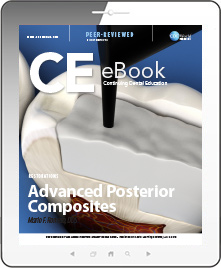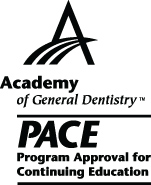CDEWorld > eBooks > Advanced Posterior Composites


ADA CERP is a service of the American Dental Association to assist dental professionals in identifying quality providers of continuing dental education. ADA CERP does not approve or endorse individual courses or instructors, nor does it imply acceptance of credit house by boards of dentistry. Concerns or complaints about a CE provider may be directed to the provider or to ADA CERP at www.ada.org/cerp/

Approved PACE Program Provider. FAGD/MAGD credit. Approval does not imply acceptance by a state or provincial board of dentistry, or AGD endorsement. 1/1/2023 to 12/31/2028. ID # 209722.
eBook
Released: Tuesday, January 22, 2019
Expires: Monday, January 31, 2022
Advanced Posterior Composites
By Mario F. Romero, DDS
Commercial Supporter: Kerr Corporation
The aim of this article is to update the general practitioner on a variety of topics that affect the biologic response and longevity of posterior composite restorations. Posterior composite restorations are common. It is important for the dental practitioner to understand the science behind these restorations and learn techniques to effectively and efficiently complete them, providing patients with a better outcome and improving the overall practice.
LEARNING OBJECTIVES:
-
Recognize the biologic determinants that are essential in restorative dentistry.
-
Select an isolation technique compatible with bonding procedures.
-
Select the appropriate resin composite system based on the functional needs of the case.
About the Author
Mario F. Romero, DDS
Assistant Professor, Department of Restorative Sciences
Augusta University, Augusta, Georgia


